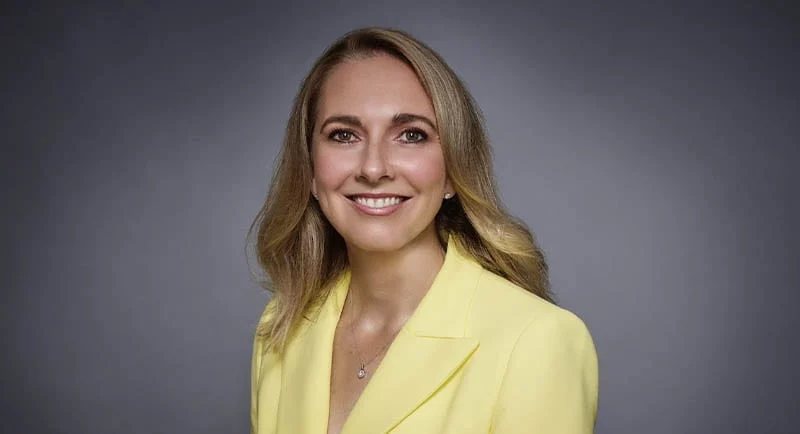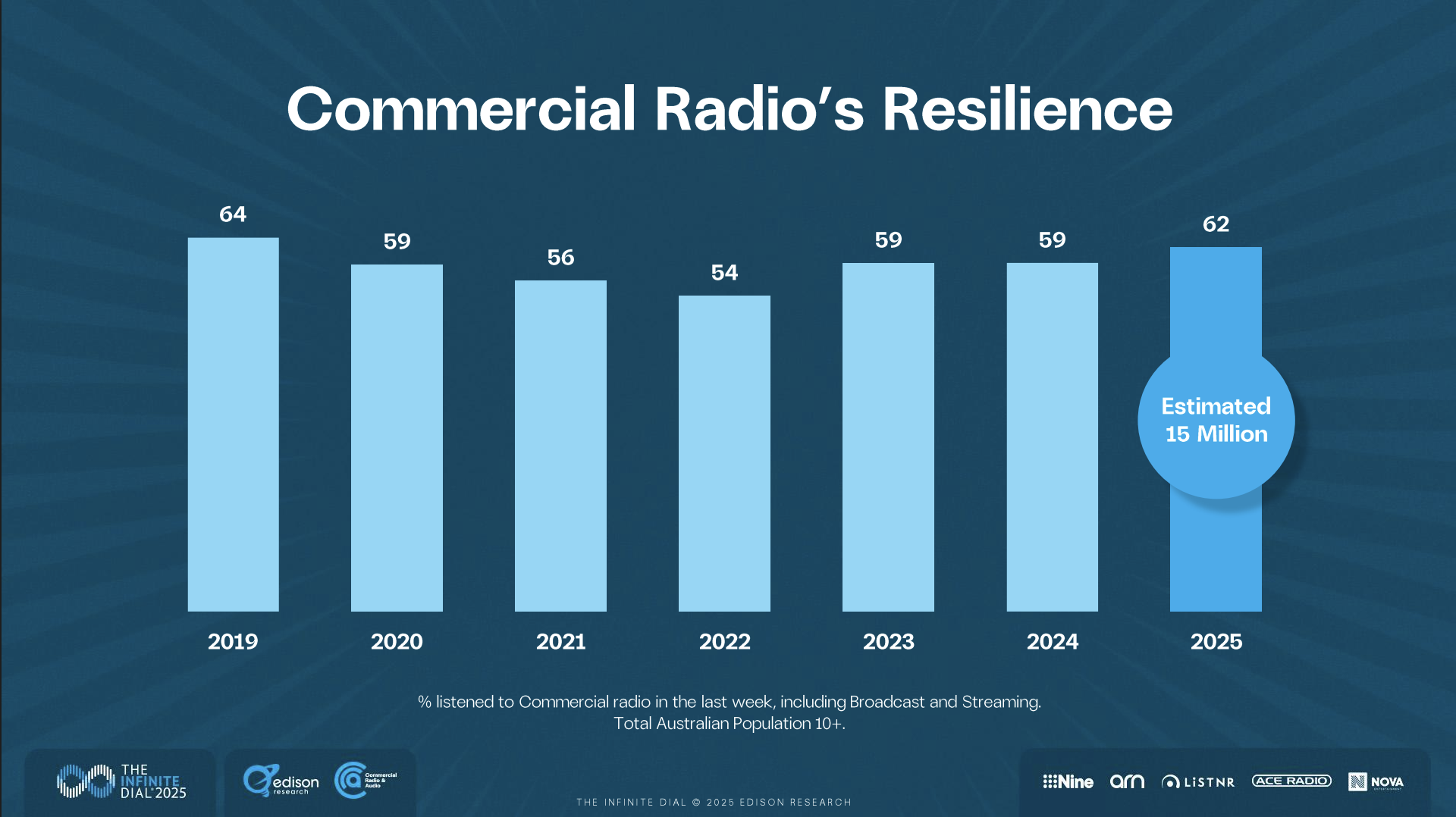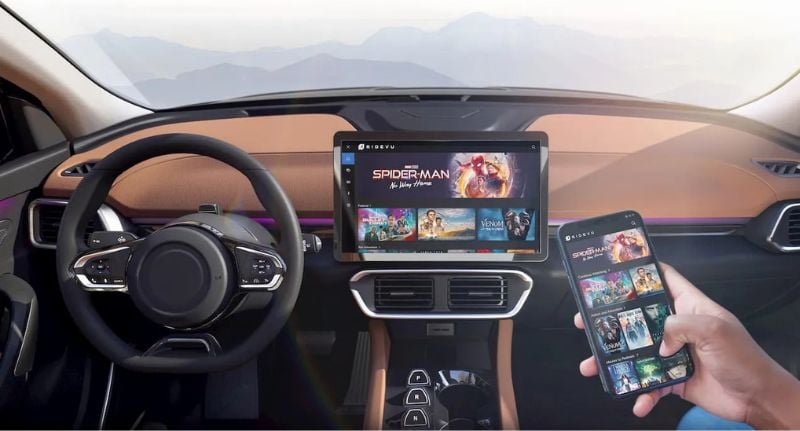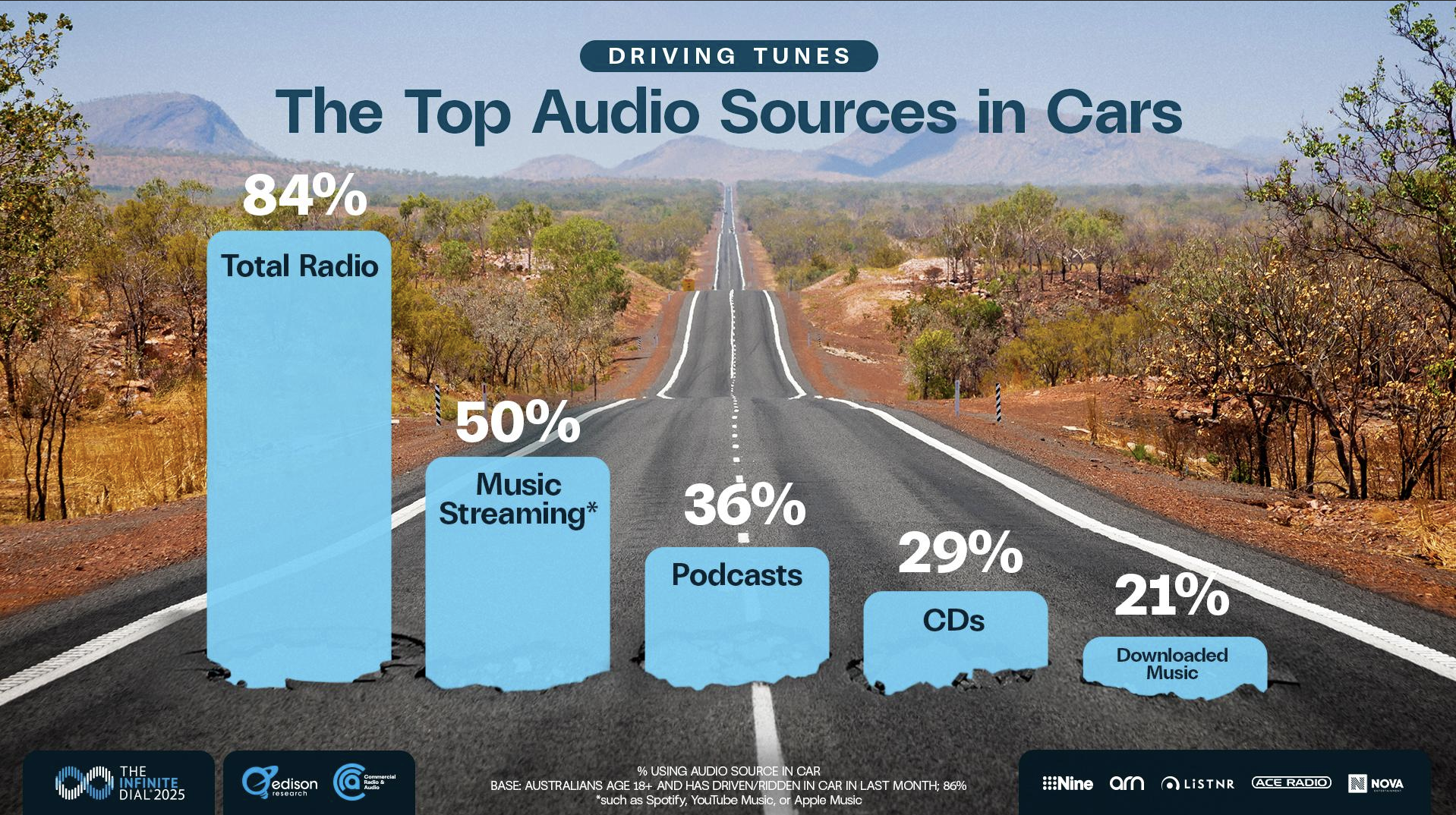Commercial Radio & Audio (CRA) is urging the federal government to legislate protections that ensure Australian radio remains easily accessible via connected car dashboards and smart speaker platforms.
The call comes as the local radio sector faces growing challenges in maintaining its visibility amid rapid shifts in automotive design and consumer audio habits, despite remaining the country’s most trusted and widely used audio source.
It follows efforts by the free-to-air TV industry to legislate prominence for local broadcasters.
From push-button to buried feature
CRA CEO Lizzie Young told Mediaweek the shift away from traditional dashboard design in new vehicles has significantly disrupted how Australians access their local stations.
Increasingly, new EVs and connected cars are being manufactured without the familiar radio button, replaced instead by complex digital displays that vary from one model to the next.
Young described the result as a “console cluster”, where getting into 20 different cars could mean being presented with 20 different user interfaces. Navigating to a local station can often involve scrolling through multiple menus, hidden behind entertainment layers or vague labels like “audio.”
In some cases, Young said, global platforms have struck exclusive deals with automakers, further complicating access to Australian content.
The problem, she said, is not only about convenience but about resilience. “We need AM, FM, DAB+, and internet streaming radio in the car. And the reason we need them all is that if internet goes down, then you need the redundancy of a receiver.”
With some new dashboards being built entirely without traditional radio receivers, she said, Australia risks losing a critical communication layer, especially when it’s most needed.

CRA CEO Lizzie Young
Radio still leads, but digital shifts are accelerating
Commercial radio continues to reach more Australians than any other audio platform, amassing 15 million weekly listeners according to Edison Research’s Infinite Dial 2025, which is four times the reach of ad-supported Spotify.
In the car, where 84% of Australians who have recently driven have tuned into radio, it remains the dominant choice.
But CRA is watching emerging trends closely.
More than one in four Australians now stream radio on the road, and among 25–54-year-olds, one in three are streaming weekly. Smart speaker ownership has surged 43% over two years, and half of all Australians now consume podcasts monthly.
This digital adoption isn’t a threat in itself, Young noted. Instead, it signals that Australians are evolving how they listen, not necessarily what they want to hear.
The problem arises when platforms make Australian content harder to find, and systems don’t prioritise local services.
A uniquely Australian challenge
Young said Australia’s geography and driving culture make access to local radio even more vital than in many overseas markets.
“We are so far removed from the headquarters of the auto manufacturing industry,” she said, pointing to decision-making hubs in Southeast Asia, North America, and Europe. “All the decisions are made there.”
Meanwhile, Australians spend significant time in their cars, often driving vast distances. Factor in the country’s bushfire-prone summers, unpredictable flooding, and remote regional areas, and the need for broadcast redundancy becomes clear.
Radio, unlike streaming platforms, doesn’t rely on mobile data or electricity and has consistently remained operational during disasters like Cyclone Alfred and the Black Summer bushfires.
CRA also notes the sector provides more than 42,000 hours of local news and 2,200 hours of emergency broadcasting annually, an irreplaceable service in crisis conditions.

Aligning with international momentum
Young said CRA isn’t alone in pushing for these changes.
“The Europeans are calling for the same thing,” she said, noting CRA has joined forces with public and commercial broadcasters in the UK and Europe to bring the issue to the global stage.
The campaign seeks meaningful collaboration between the auto and broadcasting sectors to keep radio front and centre, regardless of dashboard design.
Locally, she said the Australian government has a role to play in setting the standard.
“Given importations and stuff, the government can have a say in that element, and not allow those cars that haven’t gone through the checks and balances, perhaps, if there is legislation.”
She pointed to existing frameworks already established in the television sector, where free-to-air prominence has been protected on smart TVs, as a precedent.
“There is a framework that we can reflect,” she added.
What the sector is asking for
CRA, along with ABC, SBS and community broadcasters, is advocating for three key protections:
• Prominent, one-button access to AM, FM, DAB+ and streaming in all new cars
• Guaranteed discoverability of Australian radio stations on smart speakers
• Reliable verbal access via voice assistants
Young confirmed these are the core asks, and stressed the changes would come at no cost to government or consumers. “We need legislation that protects our position on smart speakers and in the cars,” she said, “and that basically is: prominent one-button access to Australian radio.”
The same principles, she said, should apply to the smart speaker ecosystem. “We also need guaranteed availability and discoverability on smart speakers, and reliable verbal access via voice assistance.”
A smart speaker precedent and a ticking clock
CRA is also urging the government to take action following a smart speaker consultation that concluded in November. Young said the feedback from that process should now extend to the auto manufacturing industry. “We are calling for the action to happen off the back of that,” she said.
While conversations with government have been positive and bipartisan support appears to be building, CRA warns the clock is ticking.
“Time is against us, and we do need to start moving,” Young said.
“People are very passionate about the local Australian radio industry. We are the only media channel that’s 100 per cent Australian-owned and operated. There is resounding agreement that this is a service Australians need.”

